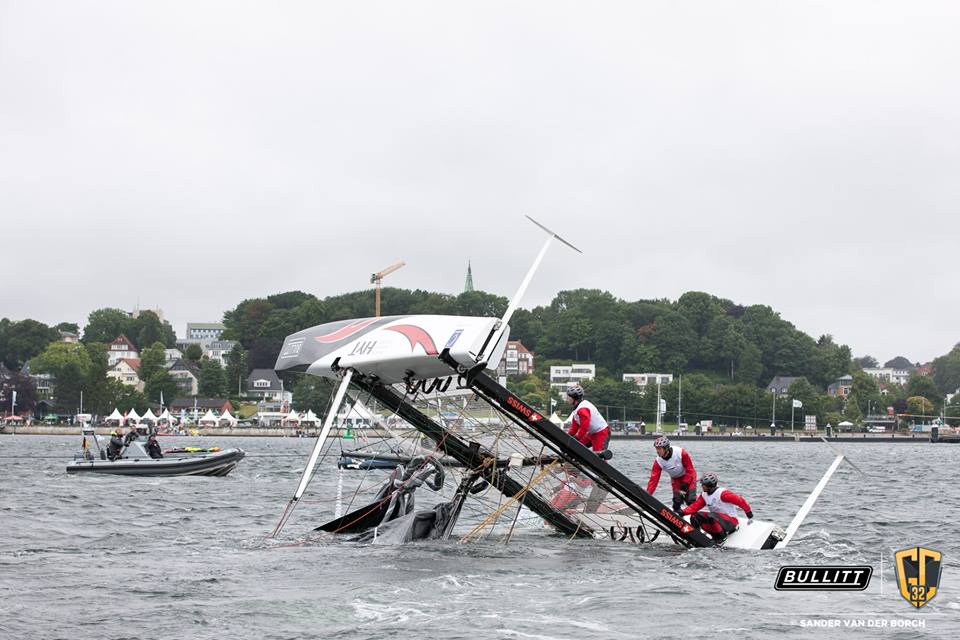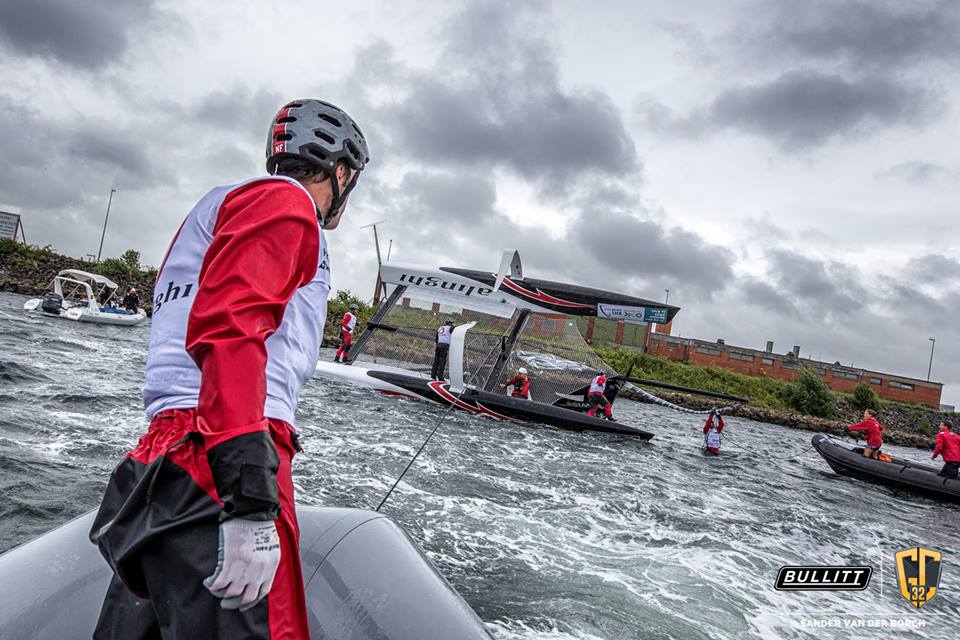DEBRIEF: Dealing with the Angle of the Dangle
Published on August 5th, 2015
The prevalence of foiling boats may be reaching further into the mainstream, but that doesn’t necessarily mean the skills needed to sail them are mainstream. Just like everything else in life, foiling boats require more work to get from point A to B.
The big variable is foil angle which gets adjusted to the conditions and during maneuvers. Get it right and you’re floating over the water. Get it wrong and you’re swimming in it.
American Morgan Larson, who is skippering an entry in the Bullitt GC32 Sailing Cup series, explains how he got it wrong while practicing last week in Germany…
“It was a little bit challenging to read the gusts because the big ones that looked big on the water weren’t that big, and the ones that looked small were quite strong. But we were stable, foiling nicely, practicing a few foiling gybes.
“We were on starboard headed on over to the rocks [on the east side of the inner Kieler Fjord] and we were timing a gybe. We had a RIB to our left, so we stretched a little further and then we had a channel marker, so I told the guys we’d go just past the channel marker and as we went for the gybe the gust got pretty big.
“The wind was a little bit lifted and it felt like were going to come out of the gybe not quite clearing the lighthouse so I just said ‘Cancel!’ and made the right-hand turn. But the port foil was already in a negative mode so as I turned it just dug the new leeward bow down and it flipped over.
“Our sails were pretty firm through the gybe, and the crew had started doing the mechanics of the gybe and were not ready to let the sails go. But that said, it was a 35-knot puff, so the capsize was always going to happen even if we had let the sails out. It all happened pretty fast.”
The boat turned most of the way upside down and the mast touched the bottom. But on bringing the boat upright, the crew were relieved to discover that the damage had been minimal. Larson learned some valuable lessons from the experience.
“Once you’re committed to turning one way or the other, you have to stay with it. In these boats you can’t peel out of it. We probably would have been fine if we had gybed. In hindsight we probably would have done a good gybe and cleared the lighthouse.”













 We’ll keep your information safe.
We’ll keep your information safe.